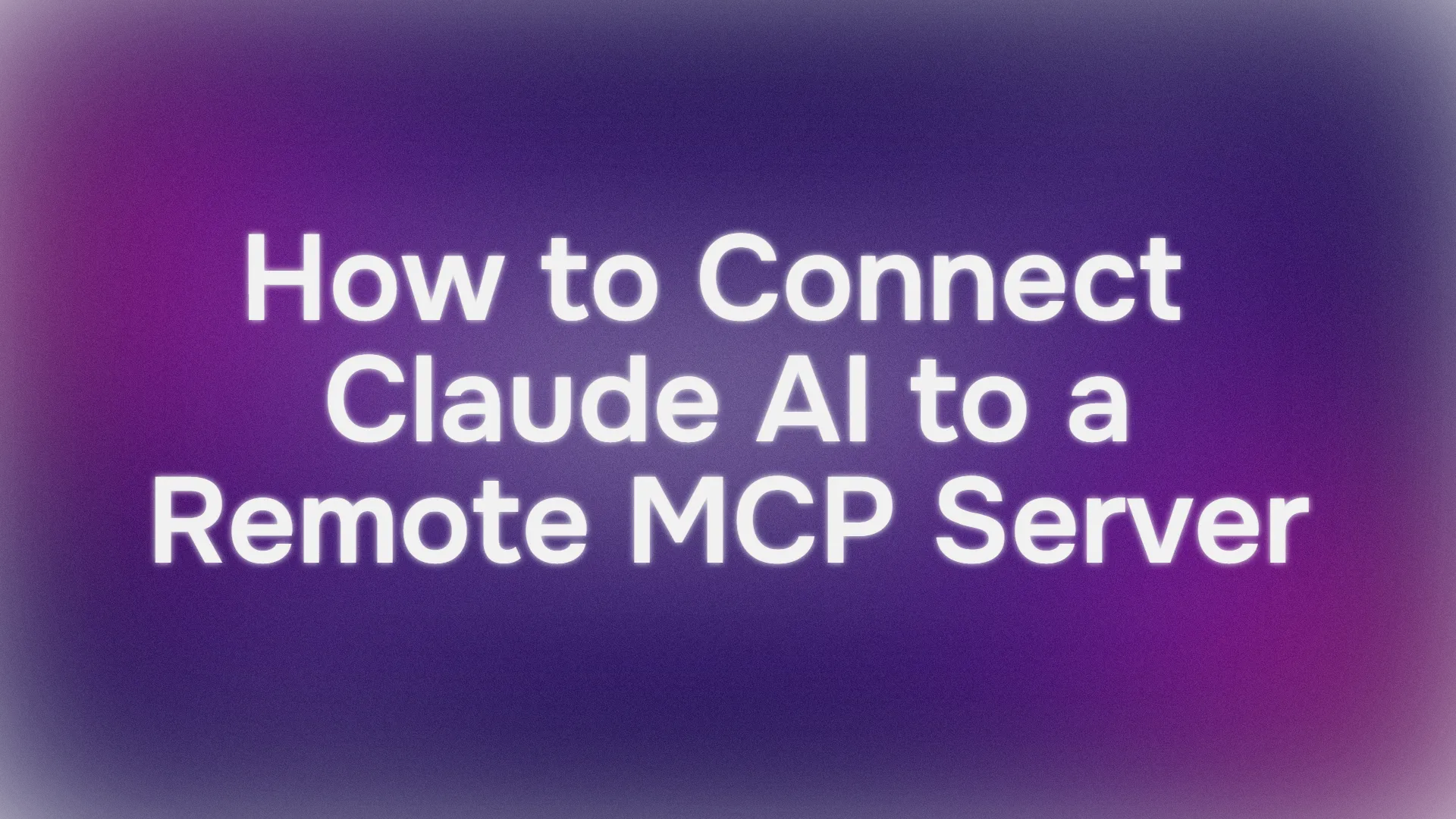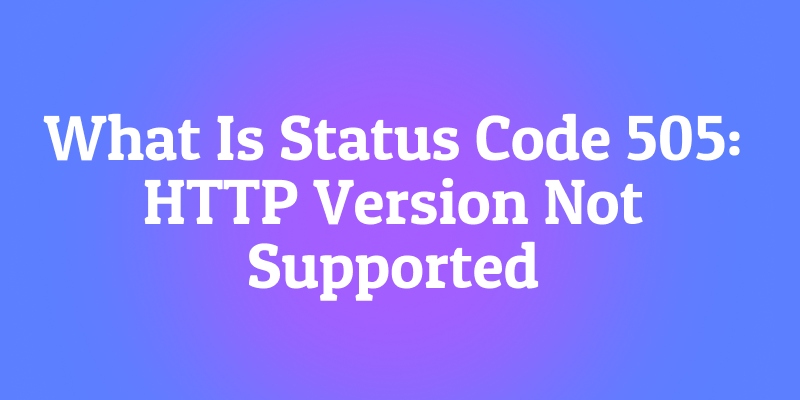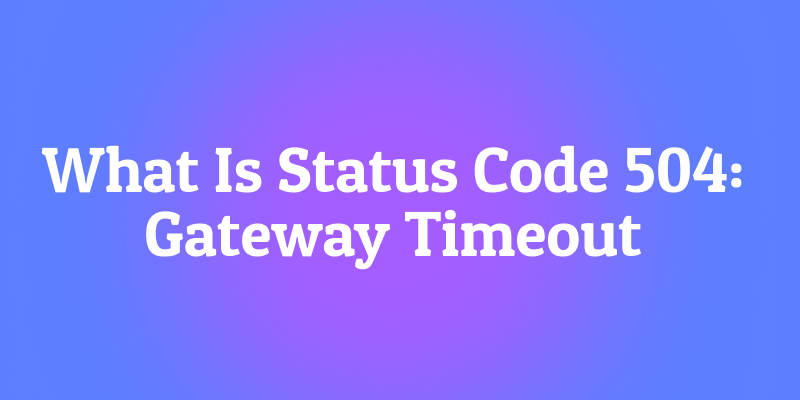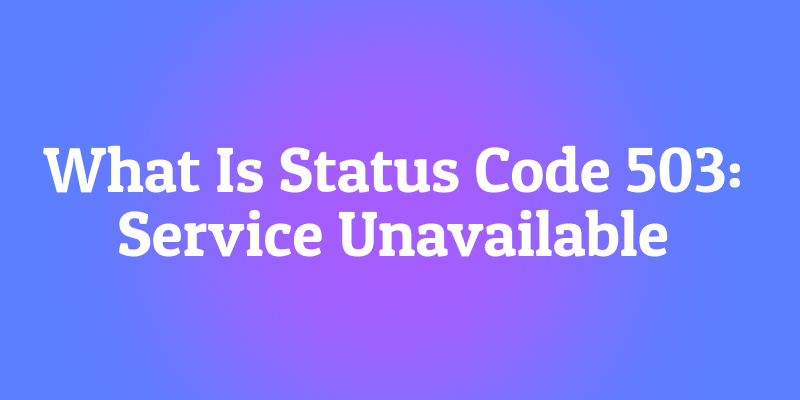Hey there! If you’ve been itching to supercharge your workflows with Claude AI, you’re in the right place. I recently set up Claude AI with a remote MCP (Model Context Protocol) server on my windows computer, and wow—it’s like giving Claude a superpower to connect with tools like Atlassian and Zappier! In this tutorial, we’ll walk through how to connect Claude AI to a remote MCP server, using examples like managing Jira tickets with Atlassian and automating tasks with Zappier. Trust me, it’s easier than you think, and by the end, you’ll be ready to make Claude your ultimate work assistant. Let’s get started!
What is Claude AI with Remote MCP Server?
Claude AI, developed by Anthropic, is a powerful AI assistant that shines in tasks like coding, research, and content creation. But what makes it even cooler? Its ability to connect to remote MCP servers! MCP (Model Context Protocol) is an open standard that lets Claude AI interact with external tools and data sources—like Atlassian’s Jira and Confluence for project management, or Zappier for automating workflows across thousands of apps.
Announced on May 1, 2025, by Anthropic, remote MCP support (also called Integrations) lets you connect Claude AI to cloud-hosted servers, making it a seamless collaborator. Imagine asking Claude to create Jira tickets in Atlassian or pull sales data via Zappier—all in one chat! Posts on X are buzzing about this feature, with users loving how it reduces context switching and boosts productivity. Let’s set it up and see it in action!
Setting Up Your Environment: The Basics
Let’s get your system ready to connect Claude AI to a remote MCP server. This is super beginner-friendly, so don’t worry—I’ve got you covered.
Check Prerequisites: Make sure you have these ready:
- Claude AI Account: You’ll need a paid plan (Max, Team, or Enterprise) to access Integrations, as noted on Anthropic’s site. Sign up at claude.ai if you haven’t already.
- Node.js: Needed for running some MCP servers. Check with
node --versionor download from nodejs.org. - Hardware: A 4+ core CPU, 16GB+ RAM, and 10GB+ free storage to handle AI processing smoothly.
Install Claude Desktop (Optional): While you can use Claude AI on the web (claude.ai), the Claude Desktop app is great for local testing. Download it from the official site for macOS or Windows. We’ll focus on the web version for this tutorial, but the steps are similar.

Create a Project Folder: Let’s stay organized:
mkdir claude-mcp
cd claude-mcp
This folder will be your workspace for Claude AI and MCP integrations.
Connecting Claude AI to Atlassian’s Remote MCP Server
Let’s start by connecting Claude AI to Atlassian’s remote MCP server, which lets Claude interact with Jira and Confluence. Atlassian announced this beta feature on May 1, 2025, and it’s perfect for managing projects without leaving your chat.
1. Sign In to Claude AI:
- Head to claude.ai and log in with your Max, Team, or Enterprise account. Integrations aren’t available on the free plan, as per Anthropic’s support docs.
2. Access Integrations:
- In the Claude web app, go to the settings menu (click your profile icon, then “Settings”).
- Look for the “Integrations” section—this is where you’ll add remote MCP servers.
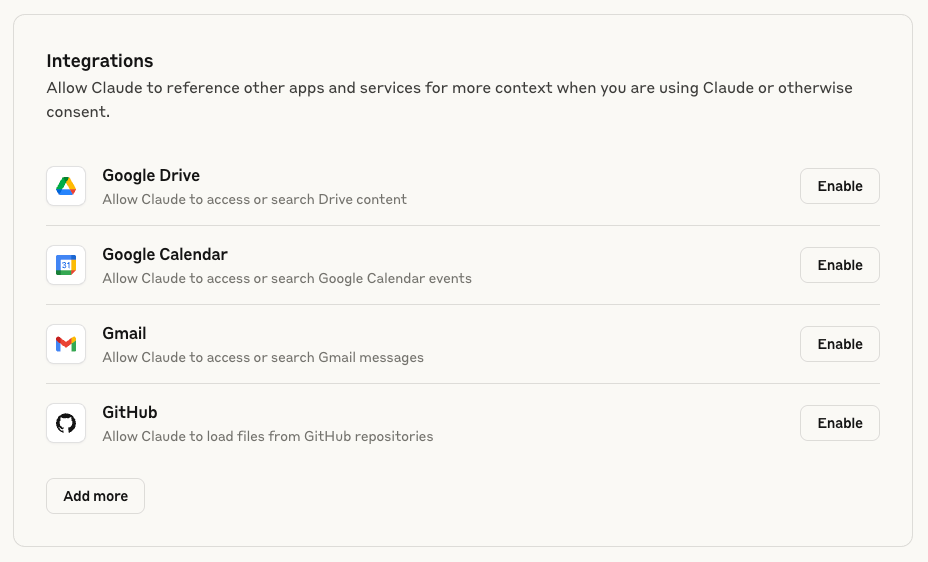
3. Add Atlassian’s Remote MCP Server:
- Click “Add More” and search for Atlassian’s Jira and Confluence integration.
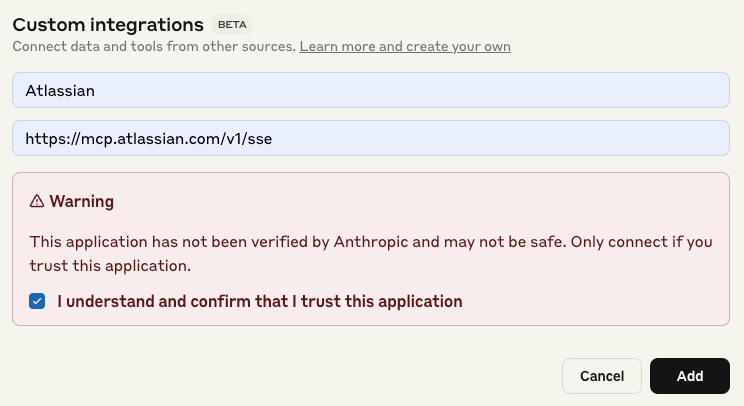
- According to the Atlassian community article on using the Remote MCP Server Beta, you need to join the beta program at atlassian.com/remote-mcp-beta to get the server URL. Once enrolled, you’ll receive a URL like
https://mcp.atlassian.com/v1. - Paste this URL into the “Server URL” field in Claude’s “Add Integration” form, then click “Save.”
4. Authenticate with Atlassian:
- Claude will initiate an OAuth flow. You’ll be redirected to an Atlassian login page—sign in with your Jira/Confluence Cloud credentials.
- Approve the requested permissions (e.g., read/write access to Jira issues and Confluence spaces). The community article notes that Atlassian uses OAuth with your existing permission controls, ensuring Claude only accesses what you allow.
- After approval, you’ll return to Claude with the integration active.
5. Test the Connection:
- Back in Claude’s chat, click "connect" in the "search and tools" menu.
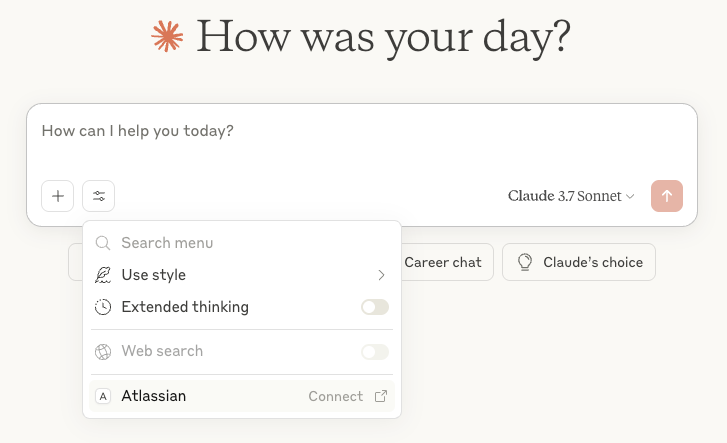
- Then, type: “Create a Jira ticket in my project ‘DEV-TEAM’ with the title ‘Fix login bug’.”
- Claude will use the Atlassian MCP server to create the ticket and confirm: “I’ve created a Jira ticket titled ‘Fix login bug’ in project DEV-TEAM.” If it fails, verify your beta enrollment or check your Atlassian permissions.
This setup lets Claude AI manage Jira tickets or summarize Confluence pages—like scaling your work by creating multiple pages at once—without leaving the chat. Pretty handy, right?
Connecting Claude AI to Zappier’s Remote MCP Server
Now, let’s connect Claude AI to Zappier’s remote MCP server to automate tasks across 7,000+ apps. Zappier announced this integration on May 1, 2025, and it’s a game-changer for workflows.
1. Create a Zapier MCP Server
- Log in to Zapier and navigate to the Zapier MCP dashboard.
- Click "+ New MCP Server" and select Claude as the MCP client.
- Name your server (e.g., "Zapier MCP") or use the default suggestion, then click "Create MCP Server".
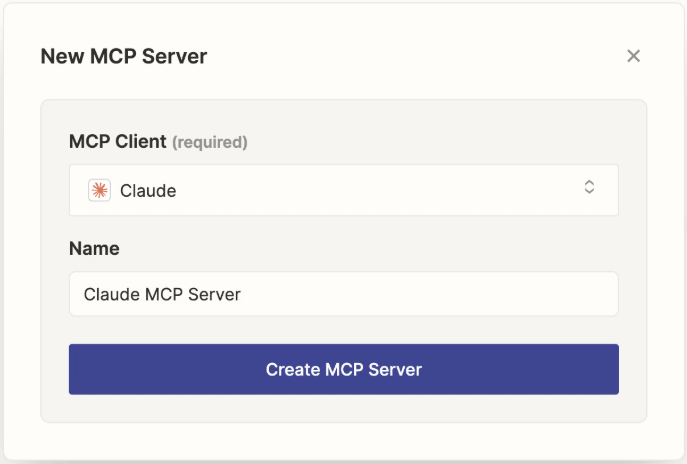
2. Configure Actions
- In your MCP server, click "+ Add Tool".
- Type the name of an app (e.g., "Google Calendar") and select the desired action (e.g., "Create Event").
- Connect your app account by authorizing Zapier to access it.
- Fill out any required fields. You can allow AI to assign values for certain fields. Click "Save".
- Repeat this process for additional actions as needed.
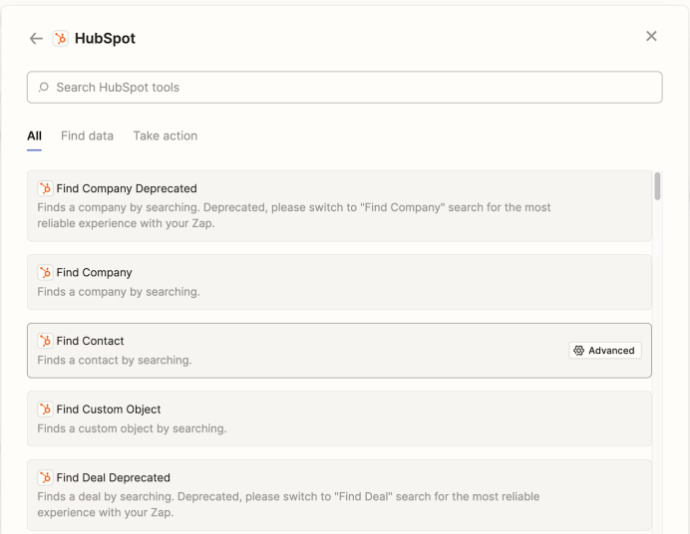
3. Connect Zapier MCP to Claude
- In your Zapier MCP server, click the "Connect" tab.
- Click "Copy URL" to obtain your unique MCP server URL.
- Open Claude.ai in your browser and log in.
- Click your initials in the bottom-left corner and select "Settings".
- Under "Integrations", click "Add more".
- In the pop-up, name your server (e.g., "Zapier MCP") and paste the integration URL.
- Check the box to accept the security notice and click "Add".
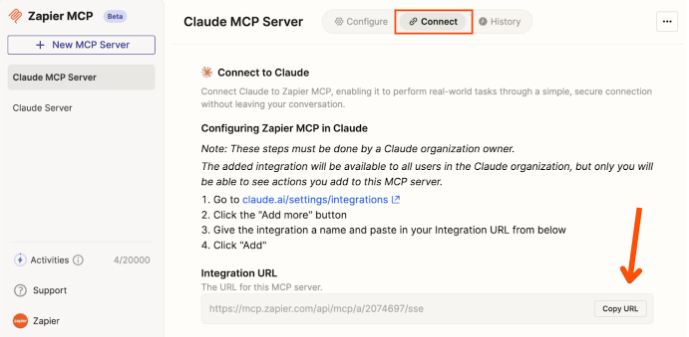
4. Authenticate and Enable Actions
- Start a new conversation in Claude.
- Click the search and tools icon.
- At the bottom of the modal, you'll see a tool named after your MCP server. Click "Connect".
- You'll be redirected to a screen to approve the connection between your server and Claude. Click "Allow".
- Use the toggle buttons to enable or disable actions that Claude can access.
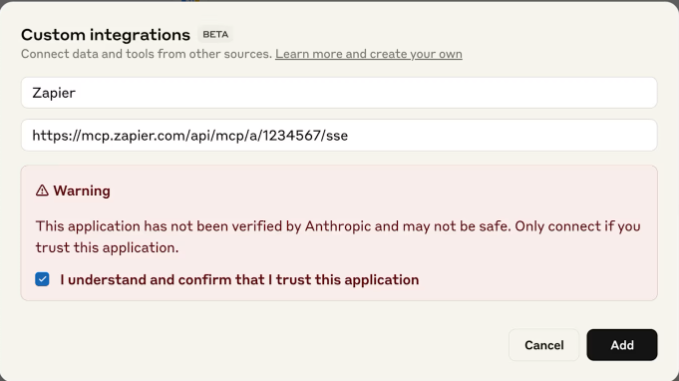
5. Test the Connection:
- In Claude’s chat, try: “Pull the latest prospect info from HubSpot for my meeting with Sarah at 3 PM.”
- Claude will use Zappier’s MCP server to fetch the data and respond with details like: “Sarah’s company is TechCorp, last contacted on April 20, 2025.” If it doesn’t work, ensure your Zappier app permissions are set correctly.
With Zappier, Claude AI can automate tasks like assigning Asana tasks or updating spreadsheets across tools—all in one conversation. It’s like having a personal assistant who never sleeps!
Testing Claude AI with Remote MCP Servers
Let’s test both integrations to see Claude AI in action with Atlassian and Zappier.
Atlassian Test:
- Ask Claude: “Summarize my Confluence page ‘Project Roadmap’ in DEV-TEAM space.”
- Claude will fetch the page via Atlassian’s MCP server and reply with a summary, like: “The Project Roadmap outlines Q2 goals, including launching Feature X by June 2025.” If you see errors, check your Confluence permissions.
Zappier Test:
- Try: “Assign a task in Asana to John for ‘Prepare Q3 budget’ due next Friday.”
- Claude will use Zappier to create the task and confirm: “Task ‘Prepare Q3 budget’ assigned to John in Asana, due Friday, May 9, 2025.” If it fails, verify your Asana connection in Zappier.
These tests show how Claude AI can seamlessly interact with your tools, saving you time and effort. Pretty impressive, huh?
Tips for Using Claude AI with Remote MCP Servers
To get the most out of Claude AI with Atlassian and Zappier:
- Be Specific: Use clear prompts like “Create a Jira ticket in project DEV-TEAM” to avoid confusion.
- Check Permissions: Ensure Claude has access to your Atlassian spaces or Zappier apps—OAuth issues are common culprits.
- Monitor Usage: Remote MCP servers may have rate limits, so keep an eye on your plan’s quotas in Claude’s settings.
- Explore More Integrations: Anthropic lists other MCP servers (e.g., Cloudflare, Intercom) in their Integrations page—try them out!
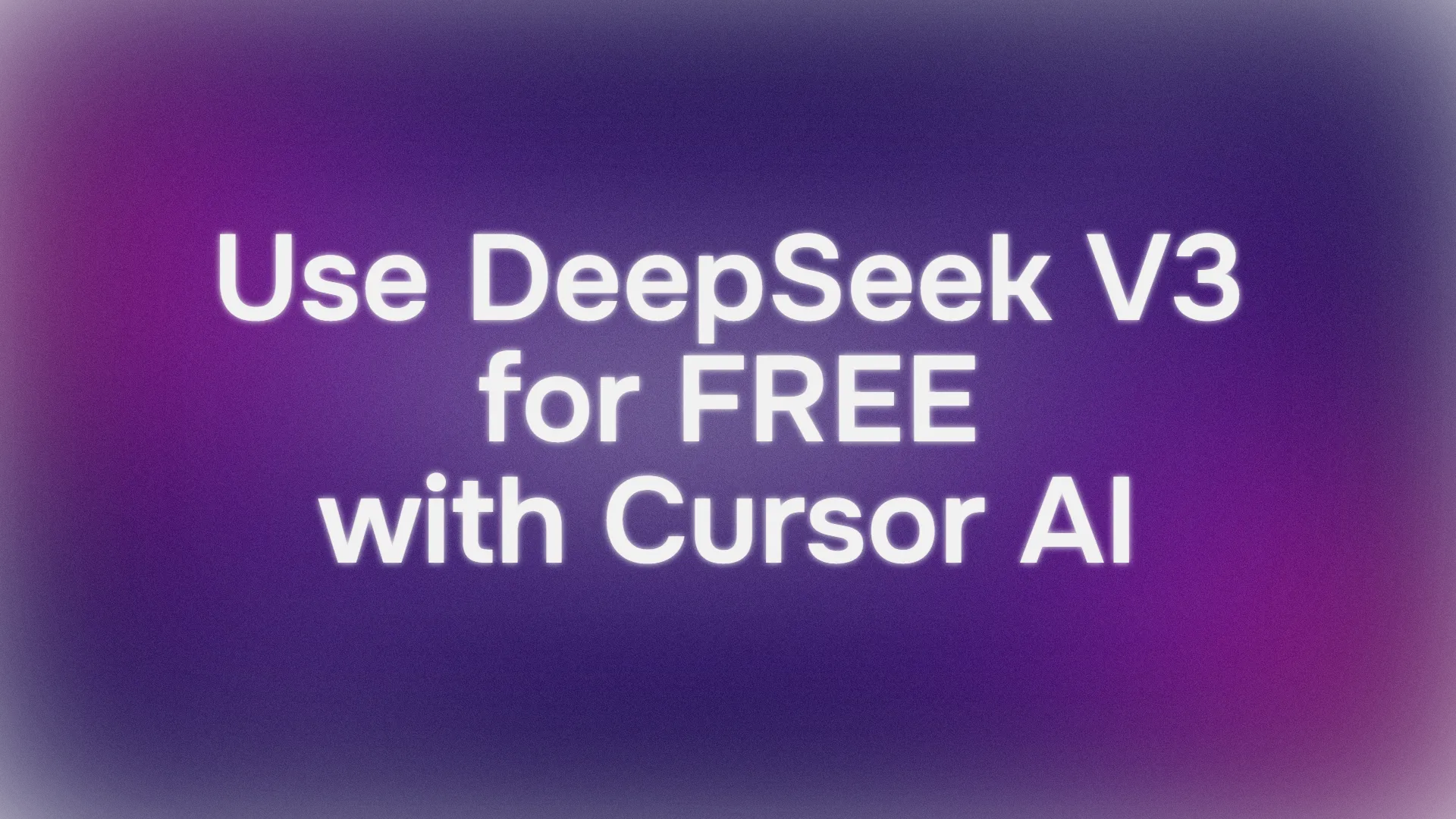
My Takes on Claude AI with Remote MCP
After setting up Claude AI with remote MCP servers, here’s what I think:
- Game-Changer: Managing Jira tickets via Atlassian without leaving Claude’s chat is a huge time-saver.
- Automation Magic: Zappier lets Claude handle repetitive tasks—like pulling HubSpot data—in seconds.
- Security First: Both Atlassian and Zappier use OAuth, so I felt confident my data was safe.
Some users on Reddit noted occasional OAuth hiccups, but restarting the connection usually fixes it. Overall, it’s a solid upgrade for Claude AI!
Wrapping Up: Your Claude AI and MCP Adventure
You’ve just connected Claude AI to remote MCP servers, unlocking a world of productivity with Atlassian and Zappier! From creating Jira tickets to automating workflows, Claude is now your go-to collaborator. Try experimenting with other MCP servers like Cloudflare or Intercom, and share your wins on X—I’d love to hear about them! For more details, check Anthropic’s support docs at support.anthropic.com. Keep rocking with Claude AI, Zappier, and Atlassian!
